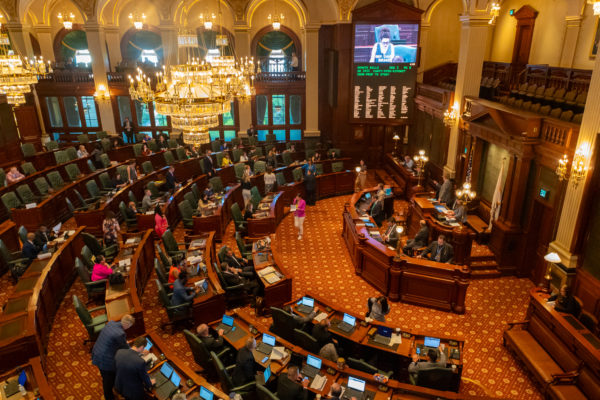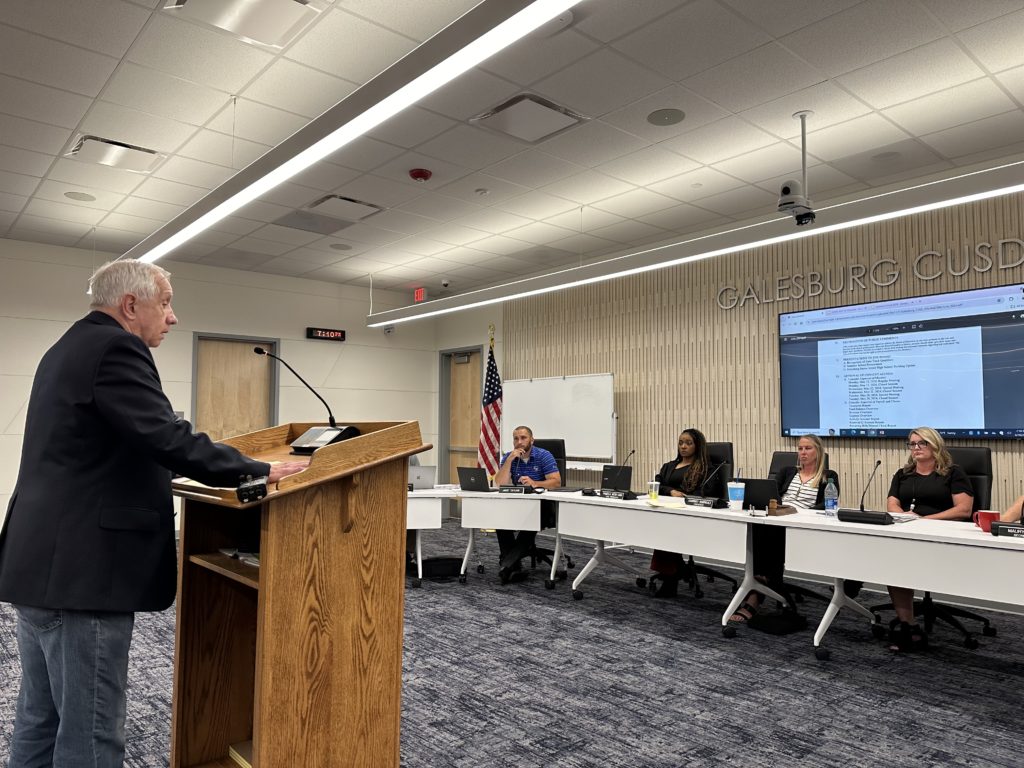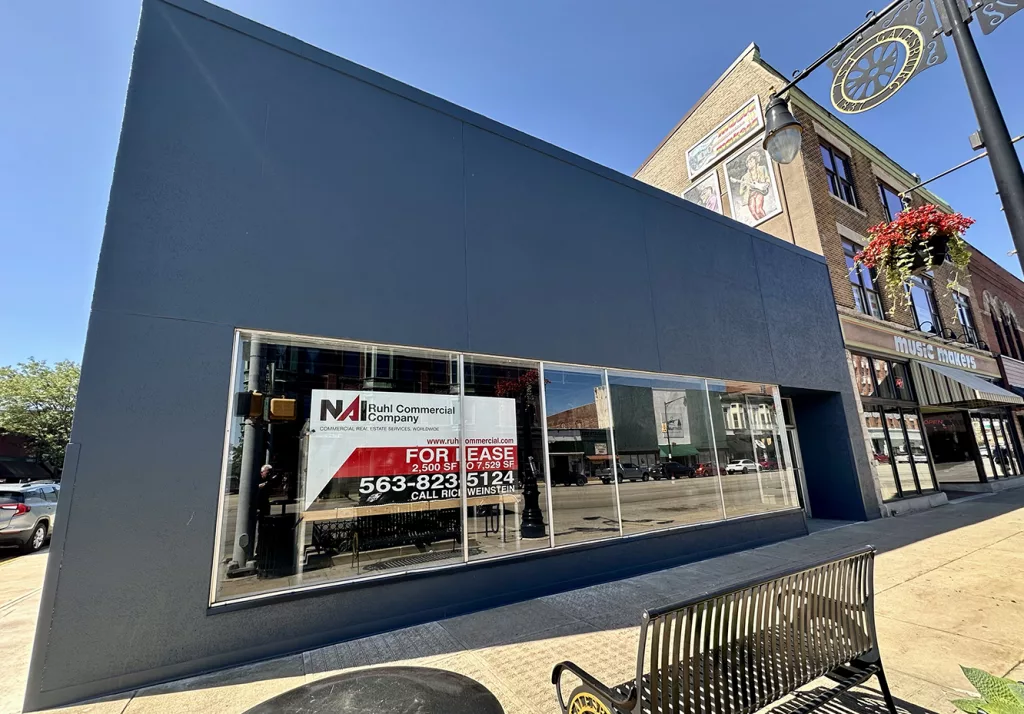
It’s been four years since some of the worst scenes of COVID-19 played out in locked-down nursing homes during the early months of the pandemic.
But while most of the world has moved on, the nursing home industry is still reeling from COVID, which exacerbated pre-existing challenges in long-term care – difficulties hiring and retaining staff and a population more reliant on government-funded care chief among them.
Read more: ‘Already in crisis:’ Report says Medicaid funding shortfalls causing nursing homes to close | Report: Nursing homes in crisis with staff shortages
Employment in skilled nursing facilities nationwide as of February was down 8.3 percent compared with February of 2020, the month before the pandemic hit. Although the current staffing levels have somewhat recovered from their lowest point in early spring 2022 – when staffing was down 15.5 percent from pre-pandemic levels – other areas within health care have recovered much faster, according to a Kaiser Family Foundation analysis
The hourly cost of hiring a registered nurse increased 12.5 percent nationwide between 2020 and 2022, to $40.84 on average, according to a recent report by national consulting firm Marcum LLP. But amid a shrinking pool of RNs applying for jobs at skilled nursing facilities, many operators are forced to hire temporary contract nurses who earn, on average, 70 percent more than the average RN salary. Hiring certified nursing assistants, or CNAs, has followed a similar trend.
Marcum’s report, which focused on the three-year period after COVID hit in 2020, cited rising wages in other industries as a key reason for CNAs to leave the industry “and further drive up wage rates and increase the agency pool usage.”
For brothers Moe and Sam Freedman, owners of St. Louis-based Accolade Healthcare, the increase in staffing costs and the inflation-driven increase in other costs for operating the home – from food to medical supplies to insurance – have become “very unmanageable,” president and CEO Moe Freedman said in a recent interview. His company has been operating in the red.
Accolade runs seven skilled nursing facilities in central Illinois, in addition to one assisted living facility in East Peoria. The Freedmans entered the industry in 2017, growing from their first acquisition of a pair of nursing homes in Paxton and Pontiac. They’ve since bought homes from independent operators and said operating a long-term care facility as a “mom-and-pop shop” is “virtually impossible,” as rising costs need to be spread across a portfolio of homes for the business to be workable.
“Our cash flow is – we’re hemorrhaging and it’s dire,” Moe Freedman told Capitol News Illinois. “I don’t see us growing anytime soon and I don’t know if we’ll be at the same level in a year from now at the rate that we’re at right now.”
Keeping staffing up has also been a challenge due to the changing nature of who lives in nursing homes. In recent years, wealthier people have trended toward staying in their homes and receiving care from visiting nurses and CNAs. As a result, facilities are more dependent on – and at the mercy of – Medicaid reimbursement rates instead of private payers, which had long been a more stable source of revenue.
Overall nursing home census rates haven’t recovered since the pandemic either.
“We’re forced to cut staff because more patients don’t come in the door, yet, when we do see new patients, their level of care has intensified,” Nikki Dinsmore, regional director of operations for Zahav Healthcare Consulting said last month at a Capitol news conference. “They’re being discharged from the hospital sooner and their care needs are greater.”
Zahav, which operates a nursing home in Des Plaines, has been “losing workers to jobs in the hospital or telehealth,” Dinsmore said, not to mention jobs in totally different sectors like retail and food service.
But even as the industry grapples with greater reliance on Medicaid instead of private payers, state Sen. Dave Syverson, R-Rockford, said nursing homes have to be ready to absorb patients when their needs become too great for home care – like his mother, who died earlier this year at age 93.
“We provided home care for her but that started to get more expensive as we had to have visiting nurses, we had to have an aide in there,” he said, adding that 24-hour care at a nursing home also felt safer toward the end. “Then you had to have oxygen brought in. And when you start looking at what the daily cost was for us to have her at home, it ended up being cheaper for us in the last couple of months of her life to move her to a nursing home.”
‘We are still well underwater’
Forty-nine Illinois nursing homes closed between 2019 and 2022, according to the state’s Department of Public Health; 2023 data is not yet available. In that same time period, six new facilities opened, for a net loss of 43. The closures mean more than 2,500 nursing home beds have vanished.
Peoria-based Petersen Health Care, which operates more than 90 nursing and senior care homes in Illinois, Iowa and Missouri, filed for bankruptcy in March, estimating it had nearly $300 million in debt. A federal bankruptcy judge approved a plan last week for the company to borrow $45 million to keep operating throughout bankruptcy proceedings.
Petersen plans to sell off its assets this summer, according to the company’s proposed timeline. Whether the homes remain open beyond that will be up to the winning bidder.
Petersen is far from the only nursing home operator to face bankruptcy; according to a new report from national law firm Polsinelli, health care companies’ levels of real estate distress – a term for properties on the brink of or already in foreclosure – is the highest it’s been in 15 years. The report noted significant distress in nursing homes in particular.
The Freedmans said it’s scary to look around their industry and see operators they admired having to close their facilities. They told Capitol News Illinois they worry about the possibility of facing that outcome themselves.
Sam Freedman, Accolade’s CFO, said federal stimulus money during the pandemic “kind of bridged the gap” between losses and an increase in Illinois’ Medicaid reimbursement rate the General Assembly approved in 2022.
Read more: New law provides $700 million for nursing home staffing
“The increased rate really helped us get over the hump once that (stimulus) money started running out,” he said. “It’s not helping us, you know, be profitable, but it’s helping us survive.”
The $700 million increase in funding for nursing home staffing came after two years of negotiating with the industry. Matt Pickering, executive director of the for-profit nursing home advocacy group Health Care Council of Illinois, pointed to the state’s years of depressed Medicaid reimbursement rates before the 2022 increase, which he said in a recent interview represented a 12 percent increase – but only “brings us up to 2017 costs.”
“Even though we got that increase, we are still well underwater,” he said. “We’re not ungrateful. But we’re still scrambling.”
The law also included $83 million to help long-term care providers launch recruitment efforts with an apprenticeship model.
But operators say it’s not nearly enough to stem the bleeding in their staffing levels.
Accolade has set up its own CNA “school,” in which CNAs are pre-hired as “auxiliary aides” and do weeks of classroom and clinical work at two of its locations. While the setup has helped Accolade wean itself off depending on agency CNAs, except in rural areas, Moe Freedman said the state has lagged on paying for the CNA incentive program by about six months.
“We are compensating CNAs at a rate that is not really appropriate for the Medicaid reimbursement rate,” he said. “But we are anticipating this revenue source that (the state) promised us and they continuously drag out that reimbursement.”
But with a tight budget year, leaders in the General Assembly can’t promise a huge windfall for the struggling industry. House Majority Leader Robyn Gabel, D-Evanston, who leads a working group on Medicaid issues, told Capitol News Illinois the industry asked for $75 million to make up for increased property taxes, which the state had at one time subsidized.
Read more: ‘Significant enough’ opposition to Pritzker’s revenue plan leads to call for cuts
But in the waning days of legislative session, Gabel said the working group is still exploring ways to help the industry but was explicit that General Assembly can’t give the industry anywhere near the $75 million it requested.
“You know, last year we gave just about every sector a rate increase,” she said. “Did we give them what they wanted? No; we probably cut every request in half. And it still added up to a billion dollars…It was like a huge, huge increase. So this year, we’ve really tried to rein back and just not do those kinds of rate increases.”
Gov. JB Pritzker last summer used his power of amendatory veto to nix a provision in a broader property tax bill that would have brought property taxes for nursing homes in Cook County in line with those for other residential health care settings. The industry claimed it would have provided “critical relief” to 300 nursing homes in Cook County.
But Pritzker disagreed, siding with local mayors who complained the resulting shift in property tax burden would especially hurt municipalities in Chicago’s south suburbs. Despite the General Assembly’s unanimous support on the original bill, lawmakers declined to override the governor during their fall veto session, and Gabel indicated the issue wouldn’t be taken up again “in that way.”
Minimum staffing rule
The industry is also fearful a new federal rule designed to implement minimum staffing ratios will have the unintended effect of further closures.
More than two years after announcing a plan to set mandatory staffing minimums at skilled nursing facilities, President Joe Biden’s administration last month implemented a new rule to phase in those minimums over the next five years.
Organized labor, including caregiving juggernaut Service Employees International Union, supported the rule, which will require skilled nursing facilities provide residents with a minimum 3.48 hours of nursing care per day, including at least 33 minutes of care from a registered nurse and nearly 2 1/2 hours of care from a nurse’s aide. Additionally, the rule will require facilities have a registered nurse on site at all times.
In a statement after the rule was finalized, Katie Smith Sloan, president and CEO of nonprofit nursing home industry group LeadingAge, pointed out that “schools are not graduating enough nurses” to fill either currently open positions or those projected to open in the future. She added that registered nurses, or RNs, are leaving the workforce, and those who are staying are “typically choosing to work in environments that are not long-term care.”
“How can providers hire more RNs when they do not exist?” she said in a statement.
After the Biden administration released its proposed rule in September, a KFF analysis found that fewer than one in five nursing homes nationwide would be able to meet the staffing minimums outlined in the rule without having to hire more staff.
Gabel said she was attempting to address staffing issues by sponsoring a measure that would allow CNAs to dispense some medications in order to free up RNs to provide more care. She shepherded Senate Bill 774 through a House committee earlier this month, despite pushback from several groups that represent nurses, and it awaits a vote in the full chamber. It previously passed the Senate with only one vote against it.
Syverson, who’s long been involved in nursing home issues, blamed Democrats for prioritizing funding for Medicaid-style health care for noncitizens – a pair of recent programs that could cost nearly $700 million in the current fiscal year – and mandating that insurers cover an increasing roster of procedures.
Read more: Copays take effect for immigrant health programs as cost estimates continue to decline | Immigrant advocates tout new report showing benefits of state-funded health plans
But, Gabel said, the state can only do so much when the entire nursing home industry is up against trends that have been festering for years.
“I mean, there are nursing homes closing,” she said. “And, you know, it’s just possible that there aren’t enough people to fill the beds… There’s nothing I can do about that business model.”
Capitol News Illinois is a nonprofit, nonpartisan news service covering state government. It is distributed to hundreds of newspapers, radio and TV stations statewide. It is funded primarily by the Illinois Press Foundation and the Robert R. McCormick Foundation, along with major contributions from the Illinois Broadcasters Foundation and Southern Illinois Editorial Association.







